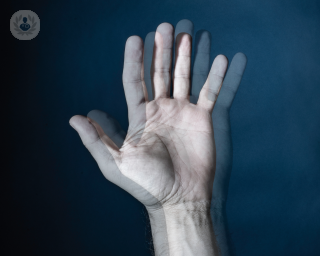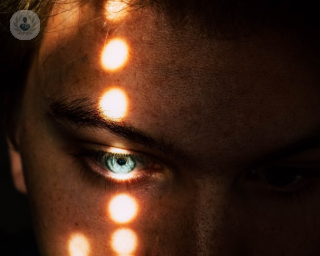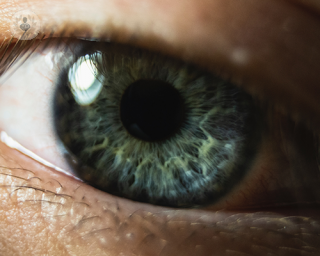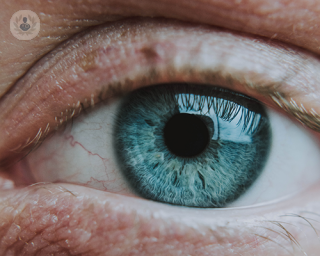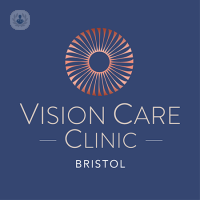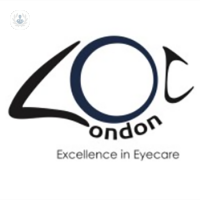Cataracts
Miss Samantha Levin - Ophthalmology
Created on: 11-13-2012
Updated on: 10-25-2023
Edited by: Jay Staniland
What are cataracts, and why do they occur?
Cataracts occur when the lens in the eye becomes cloudy, either completely or partially. Cataracts occur most commonly due to age, inflammation, or steroid use.
There are many types of cataracts. The main ones include the following:
- Congenital or infantile cataracts: These occur in children under a year old. The cause is usually unknown, but it is sometimes associated with metabolic diseases such as Down's Syndrome and infectious diseases during pregnancy, among others.
- Nuclear cataracts: This is the most common type of cataract. It is produced by a progressive hardening and yellowing of the centre of the lens. It is usually accompanied by progressive nearsightedness.
- Cortical cataracts: These are the second most common type. Opacification of the cortex of the lens occurs (outer part of the lens), and the person will notice blurred vision, loss of contrast sensitivity, and glare.
- Posterior subcapsular cataracts: This is a type of cataract that appears in young people after taking corticosteroids for a long time, following an inflammatory process, or if they have magnum myopia. It causes vision loss and significant glare within a few months.
- Traumatic cataract: Usually unilateral and associated with other eye disorders such as iris sphincter rupture, zonular weakness, or even rupture of the posterior capsule.

What is the prognosis of cataracts?
Vision deterioration after cataract diagnosis is very variable. Some cataracts can progress rapidly, decreasing vision in the months following diagnosis, while with others, there is very little change over time. Monitoring and assessing the evolution of the cataract can only be done through regular check-ups by an ophthalmologist specialising in cataracts. Cataracts are the most common cause of reversible blindness in the world.
What are the main symptoms?
Cataracts cause decreased vision. In the initial stages, you might notice more subtle symptoms such as:
- discomfort with light
- glare
- altered colour perception
What does the diagnosis of cataracts involve?
The diagnosis of cataracts should always be made by an ophthalmologist, either during routine check-ups, or when a person attends the clinic with symptoms suggestive of cataracts. The diagnosis and degree of cataract, if any, will be determined after a complete eye examination with the pupils dilated (dilated with eye drops). Each case must be assessed individually to establish the appropriate treatment.
The tests that are usually performed include:
- Slit lamp examination: the cornea of the eyes, the iris, the lens, and the space between the iris, and the cornea, are all closely examined.
- Retinal exam: with the eye dilated and the pupils open, the ophthalmologist can see the back of the eye more clearly. Using a slit lamp and/or an instrument called an ophthalmoscope, the ophthalmologist looks for signs of cataracts. They will also look for signs of glaucoma or other problems with the retina and the optic nerve.
- Refraction and visual acuity test: the sharpness and clarity of the person’s vision are tested by assessing the ability of each eye to see letters of different sizes.
What causes cataracts?
In the eye, there is a structure called the crystalline lens, which focuses images onto the retina. Under normal conditions, this crystalline lens is transparent. However, as time goes on, this structure becomes opaque, and is what we call a cataract.
In addition to ageing, there are other factors that can lead to non-elderly people developing cataracts, including:
- diabetes and other metabolic diseases, or myotonic dystrophy
- long-term use of some drugs (especially oral and inhaled corticosteroids)
- congenital cataracts
- exposure to solar radiation
- smoking
- obesity
- high blood pressure
- eye diseases, such as uveitis (intraocular inflammation)
- previous eye surgery
- eye trauma
- radiation therapy treatment
How can cataracts be prevented?
Cataracts cannot always be prevented, unfortunately. However, the following advice may help prevent cataracts:
- wear appropriate sunglasses
- control diabetes
- eat healthily
- periodic check-ups

How are cataracts treated?
The only treatment to cure cataracts and restore proper vision is to have them surgically removed, although this is only recommended if the person’s discomfort prevents them from going about their normal daily life, or if they cannot wear glasses. Surgery to correct cataracts involves removing the damaged part of the lens and replacing it with an intraocular lens.
When should I seek medical help for my cataracts?
Patients are highly recommended to visit an ophthalmologist if they experience or notice any of the following:
- blurry or misty vision
- become extremely sensitive to light
- find it more difficult to see in low light
- colours become faded
Are cataracts painful?
No, cataracts are not generally known to cause pain. They can, however, cause pain and substantial discomfort in patients who are suffering from an advanced stage of cataracts or another eye condition, such as glaucoma.
Can I drive if I have cataracts?
You can still drive car if you have been diagnosed with cataracts, but only if you meet the visual standards for driving. You can drive either a bus or lorry if you have cataracts providing that you have informed the Driver and Vehicle Licensing Agency (DVLA), you meet the visual standards for driving, and you do not experience or suffer from an intense glare as a result of cataracts.
At what age do people typically get cataracts?
The majority of us will actually develop cataracts in our forties or fifties, but, in the majority of cases, the condition will go largely unnoticed.
What are the main warning signs of cataracts?
It can be extremely difficult to notice cataracts, but there are nonetheless quite a few warning signs that will more than likely indicate cataracts. These warning signs that patients should watch out for include the following:
- cloudy or blurry vision
- not being able to see very well at night
- needing extra light to read
- seeing colours as yellow-tinted or more faded
- frequently having to change glasses or contact lens prescription
- seeing halos circling lights (particularly at night)
Do we all get cataracts?
No, not everybody will develop or suffer from cataracts.
Will my vision loss from cataracts be permanent?
Thankfully not. Cataract surgery can effectively restore one's vision thanks to the natural lens being removed and replaced with an artificial lens.
Is cataract surgery safe?
Cataract surgery actually has one of the highest success rates when it comes to medical surgical procedures, and it is very safe.

